Many of us face slow and error-filled supply chain tasks. It can be hard not to feel stuck when orders pile up, invoices go missing, or shipments get lost along the way. These mistakes waste both time and money.
This is a challenge for many people. Over 70 percent of supply chain managers say these problems are difficult to handle. Our team has spent time learning about robotic process automation (RPA).
This new technology can help fix common issues quickly.
In this blog post, we share how RPA works in supply chains using simple words. You will see how automating order processing, tracking shipments, and managing stock can bring great results.
Keep reading to find out how you could make your own supply chain work better with less effort.
Key Applications of RPA in Supply Chain Management
RPA can change how we manage the supply chain. It helps with tasks like managing orders and tracking shipments.
Order Processing Automation
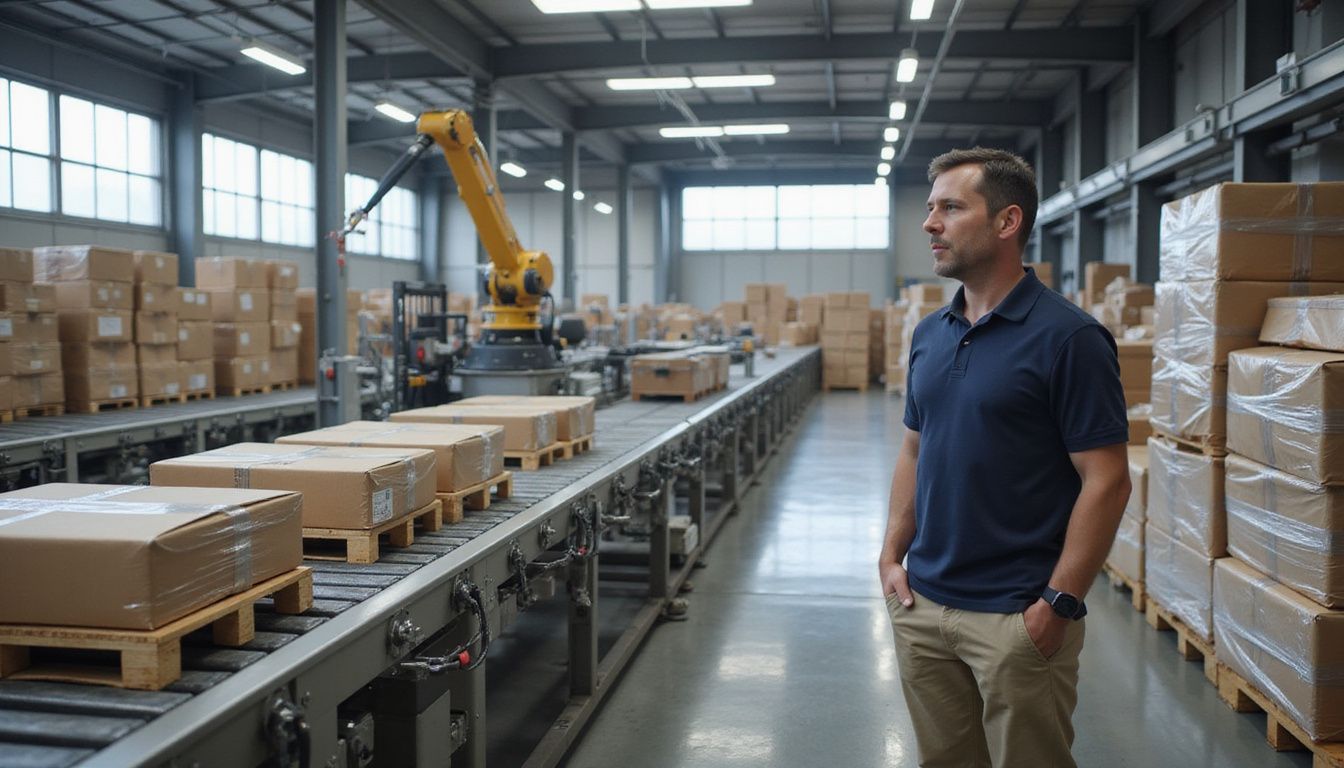
Order processing automation helps us save time by using bots to handle data entry, track orders, and update customer records. We use robotic process automation in supply chain management to speed up order fulfilment and reduce human error.
These tools connect with ERP systems and warehouse management systems to check stock levels fast. For example, Walmart uses this tech to process more than 200 million account receivables every year.
We also automate order updates for customers through emails or SMS from our logistics support platform. AI and IoT devices help keep all details correct during each step of the supply chain processes.
By using digital transformation strategies like automated storage and retrieval systems, we improve order accuracy. Bots free up employees from repetitive tasks so they can focus on better customer service.
Automating routine work means fewer mistakes and faster results for everyone.
Inventory Management
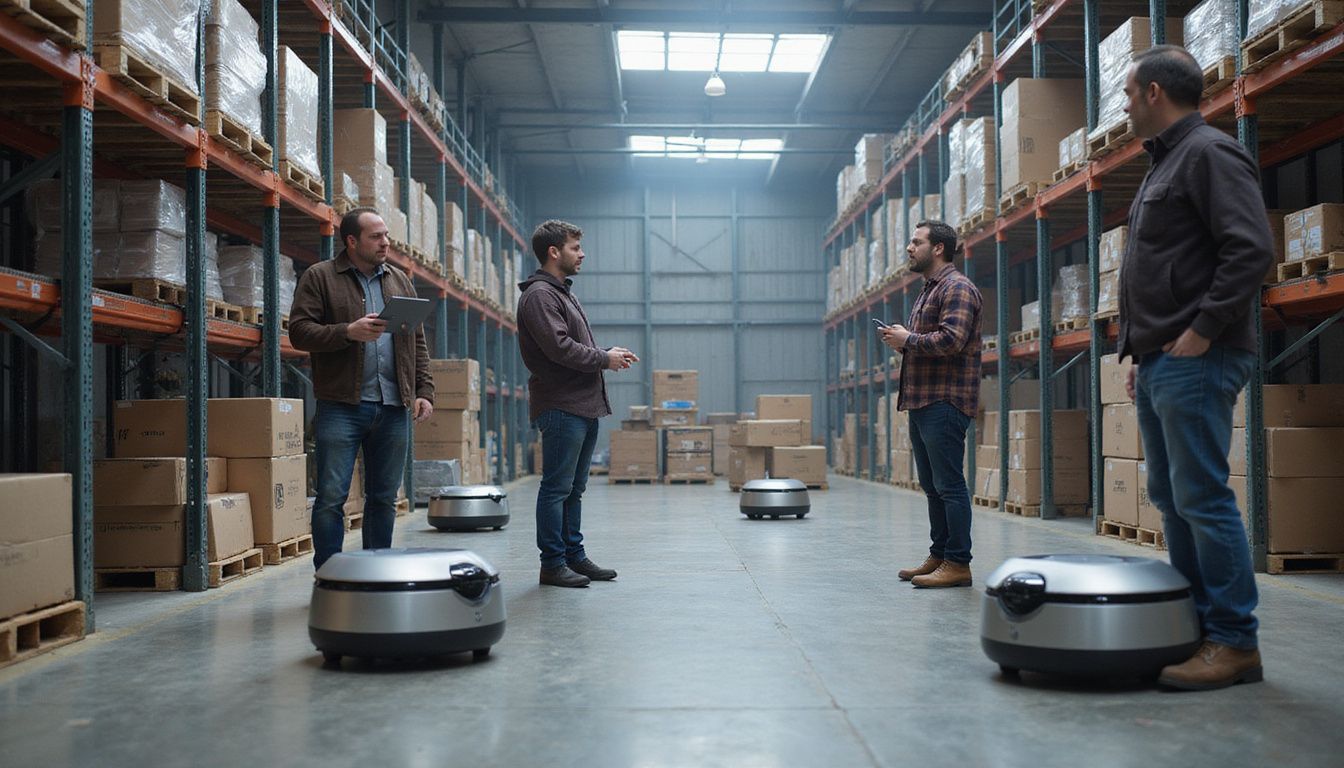
We use robotic process automation to manage stock in warehouses and distribution centres. Bots track supply levels, place orders for new items, and send alerts about shortages or extra stock.
Walmart uses over 500 RPA bots for inventory monitoring and cost reduction tasks. These bots work up to ten times faster than people, so they spot errors quickly and cut out delays in our logistics management.
We link RPA tools with databases, RFID systems, cloud-based apps, and IoT sensors to collect real-time data. This helps us avoid stockouts and waste while boosting operational efficiency.
With stronger data analytics, we improve demand forecasting and supply chain optimisation too. Fast decision-making lets us keep shelves full across e-commerce platforms and retail stores like FedEx’s partners do daily.
Supplier Management

RPA automates supplier management business processes in supply chain systems. We set up bots to send purchase orders, confirm shipments, and track order fulfillment with suppliers.
This reduces human intervention and errors. It speeds up tasks by using AI for data analysis and cognitive automation for negotiations.
We use RPA to manage compliance steps and handle supplier queries quickly. Tools like generative AI help us analyse data from distribution centres faster than before. As a result, we improve customer experience with timely responses and better supply chain optimisation.
Walmart’s supply chain uses these technologies to keep strong relations with its suppliers globally.
Shipment Tracking

We use automation to track shipments in real time. AI and IoT tools help us see where parcels move from our distribution centres to last-mile delivery spots. FedEx Express in Singapore joined RPA with bluPort, Parcel Santa, and Park N Parcel for better supply chain optimisation.
These steps give clear updates and reduce mistakes.
A logistics provider raised shipment tracking accuracy by 95% using robotic process automation. This helps us fix bottlenecks fast and keep customers happy. Order management becomes faster as we analyse data and spot delays before they become big problems.
Automation improved our shipment tracking accuracy by ninety-five percent.
Better tracking supports just-in-time manufacturing goals too. We rely on these digital innovations for higher productivity, fewer disruptions, and stronger customer satisfaction throughout logistics and supply chain management.
Invoice Processing
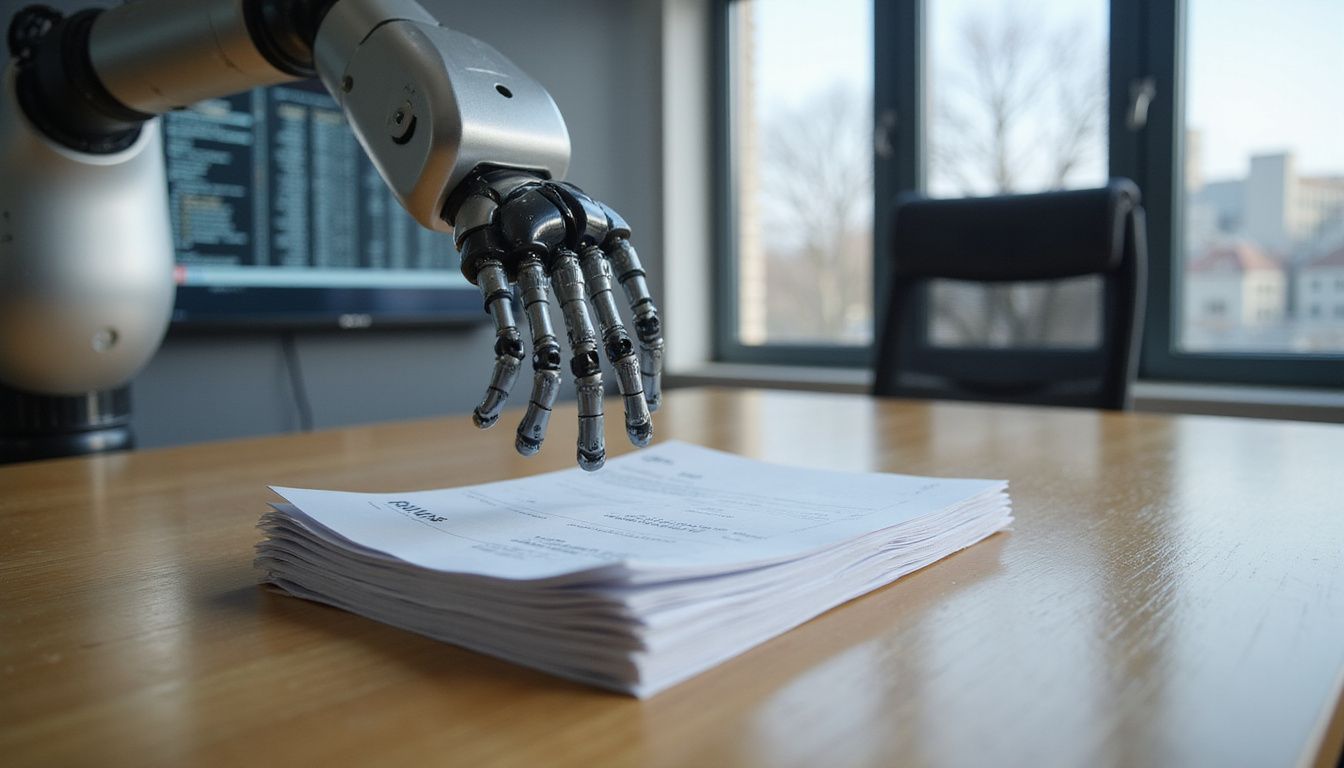
RPA handles invoice processing much faster than humans. It checks data on invoices, matches them with orders and receipts, and updates our systems. This means fewer delays at distribution centres.
With RPA, we reduce errors in supply chain optimisation and keep better records for audits.
Businesses see 30% savings on operational expenses by using automation in invoice processing. We can use artificial intelligence to scan documents like JPEG files. This helps manage data without hiring more manpower or temporary workers.
Using AI and natural language tools cuts waste and gives us time to focus on analysing data for future forecasts in supply chain management strategy.
Demand Forecasting
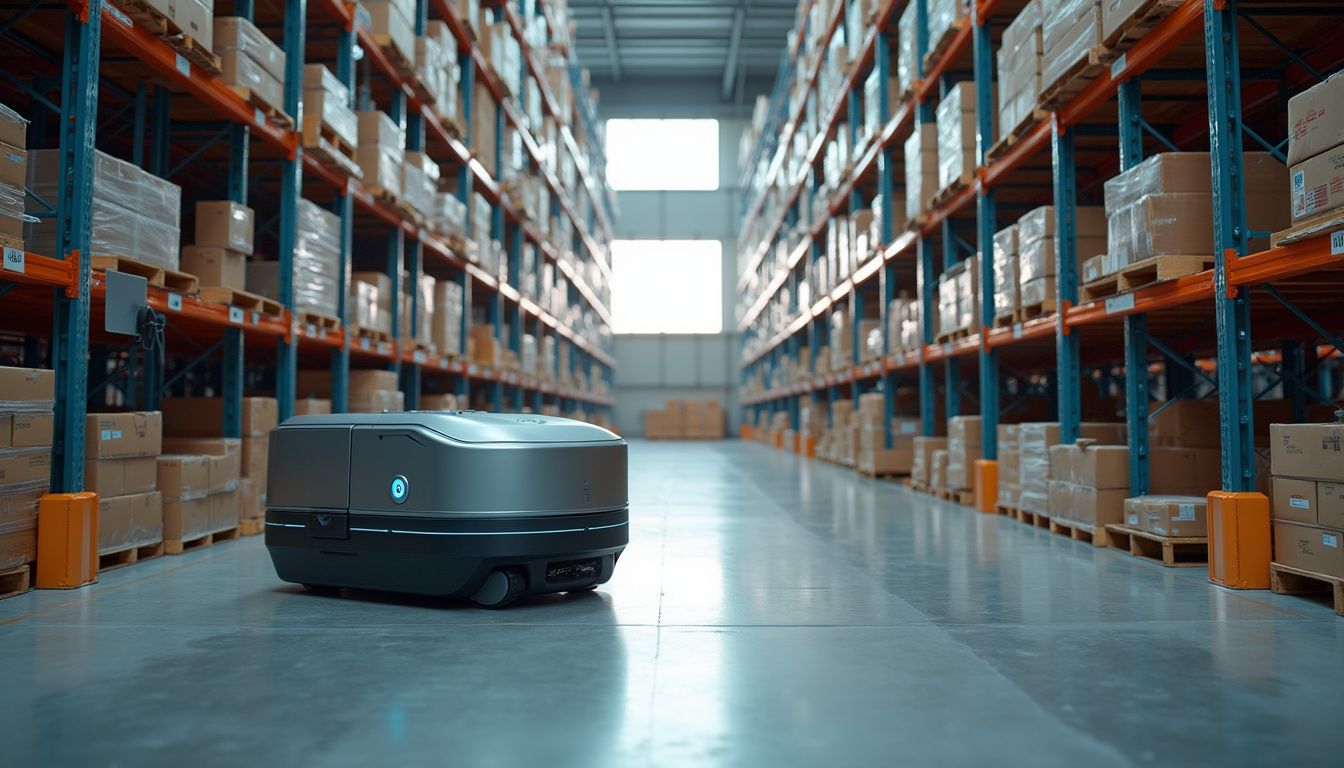
We use RPA for demand forecasting to predict what products people will need next. RPA works with AI and IoT data from distribution centres, haulage records, and digital twins. This helps us see supply chain disruptions fast.
For example, the system can collect sales numbers or weather updates every hour. We adjust our supply and demand planning quickly to avoid waste and improve supply chain optimisation.
Our multi-agent system checks many sources at once, which means better accuracy in analysing data. Small and medium-sized enterprises also benefit as they manage both in-house stock and outsourcing plans faster with smart tools like Prism.
As we keep improving our invoice processing through automation, we become ready for more efficiency across all areas of supplier management.
Benefits of RPA in Supply Chain Management
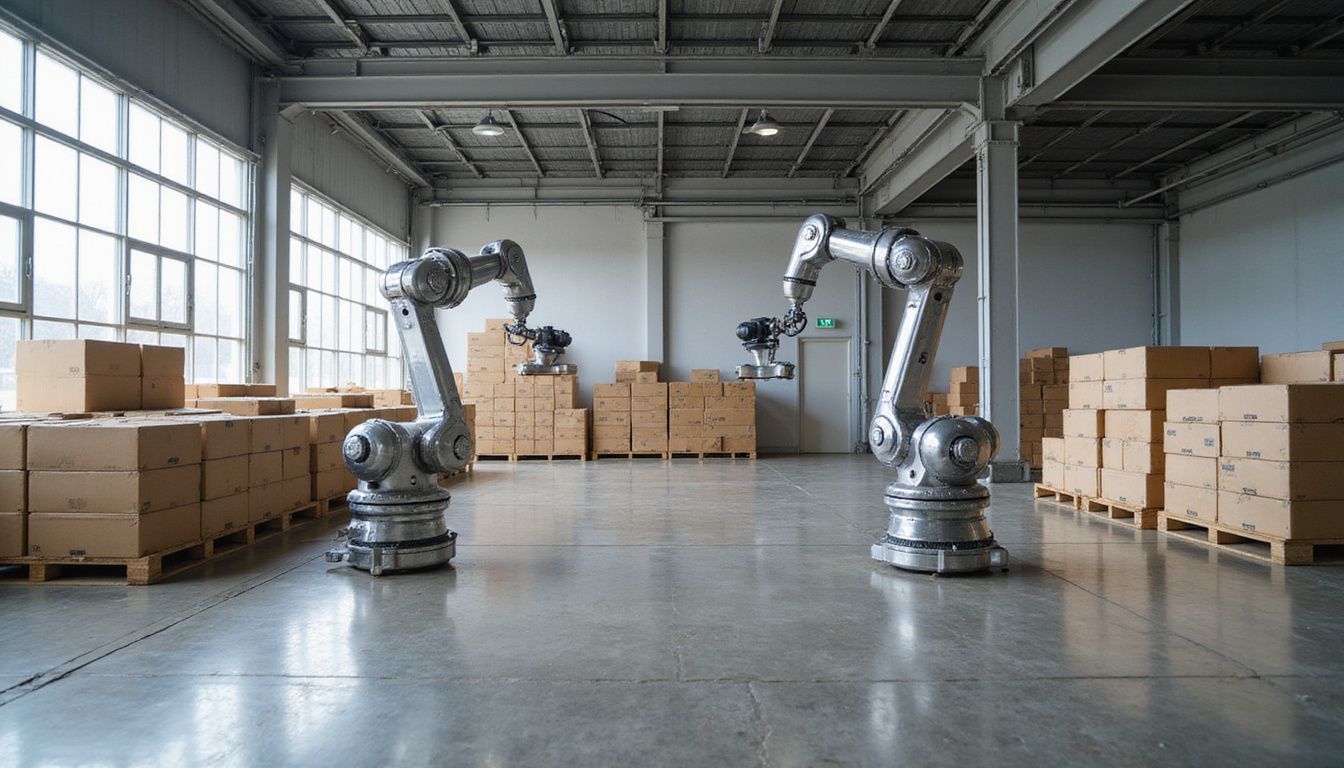
RPA brings many benefits to supply chains. It boosts productivity and helps save money. We can complete tasks faster and with fewer mistakes. This leads to happier customers too. With RPA, we can manage data better and improve our operations every day.
Enhanced Productivity

We save time and reduce mistakes by using RPA in supply chain optimisation. RPA bots can handle boring work like data entry, order updates, and stock checks. At Walmart, more than 500 bots take care of inventory monitoring jobs every day.
This gives workers extra hours to focus on more important tasks.
AI helps us analyse data faster in our distribution centres. We make better plans because the machines act quickly and do not get tired. Supply chain productivity rises as we automate shipment tracking, supplier management, and demand forecasting with tools that link with IoT devices.
Our team gains valuable hours each week thanks to automation handling routine supply chain tasks.
Scalability improves when we use these smart systems for future-proof growth. Jobs that once took all day now finish in minutes; this brings clear competitive advantages to our business.
Cost Efficiency
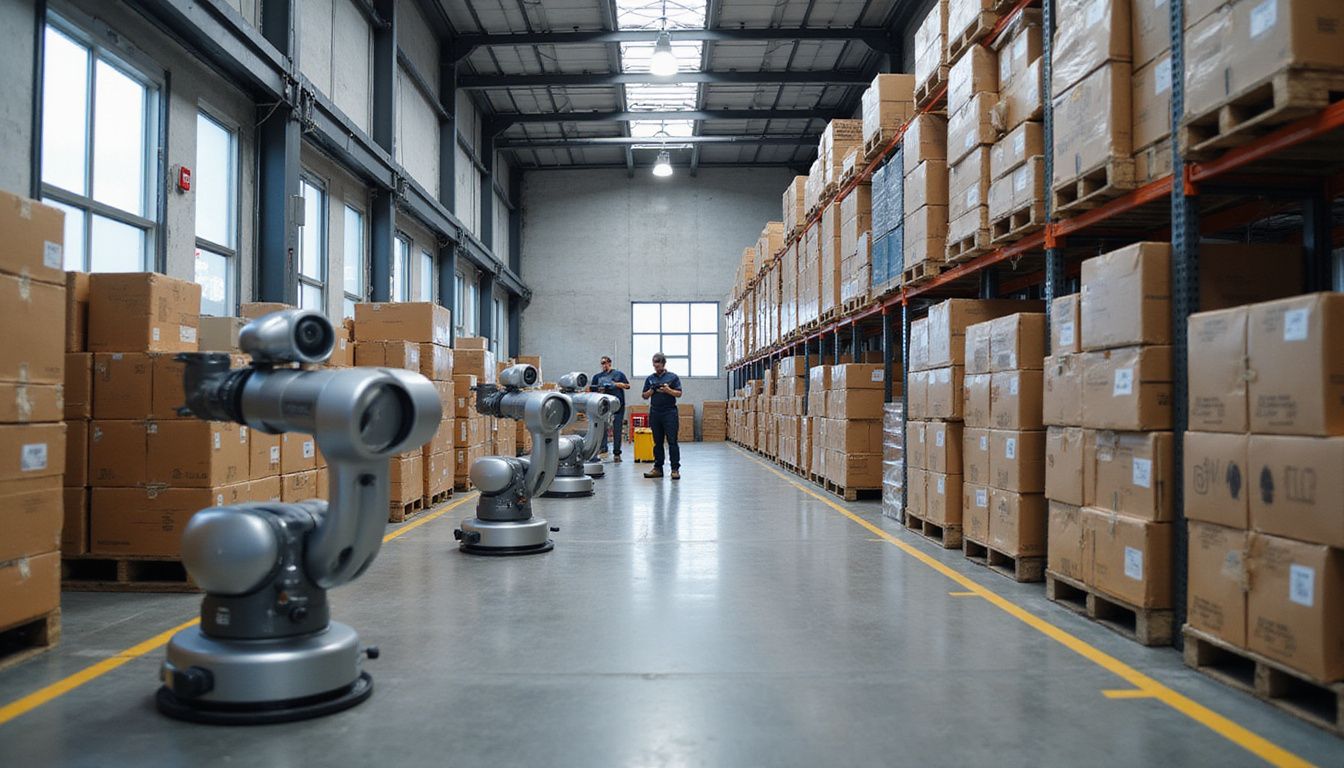
RPA helps us cut costs in supply chain management. Many companies report 30 percent savings in operational expenses after using RPA. Big firms may invest up to £20 million on AI and IoT tools for supply chain optimisation but can save close to £100 million by reducing manual work and waste.
RPA systems can even replace over 1,000 employees in distribution centres with automated data management.
Using RPA means we spend less time analysing data or handling invoices by hand. We spot errors faster and lower the risk of costly mistakes. These changes support strong cost efficiency across daily tasks like order processing, shipment tracking, and demand forecasting.
This way, we make our supply chain leaner without losing quality or speed.
Improved Accuracy
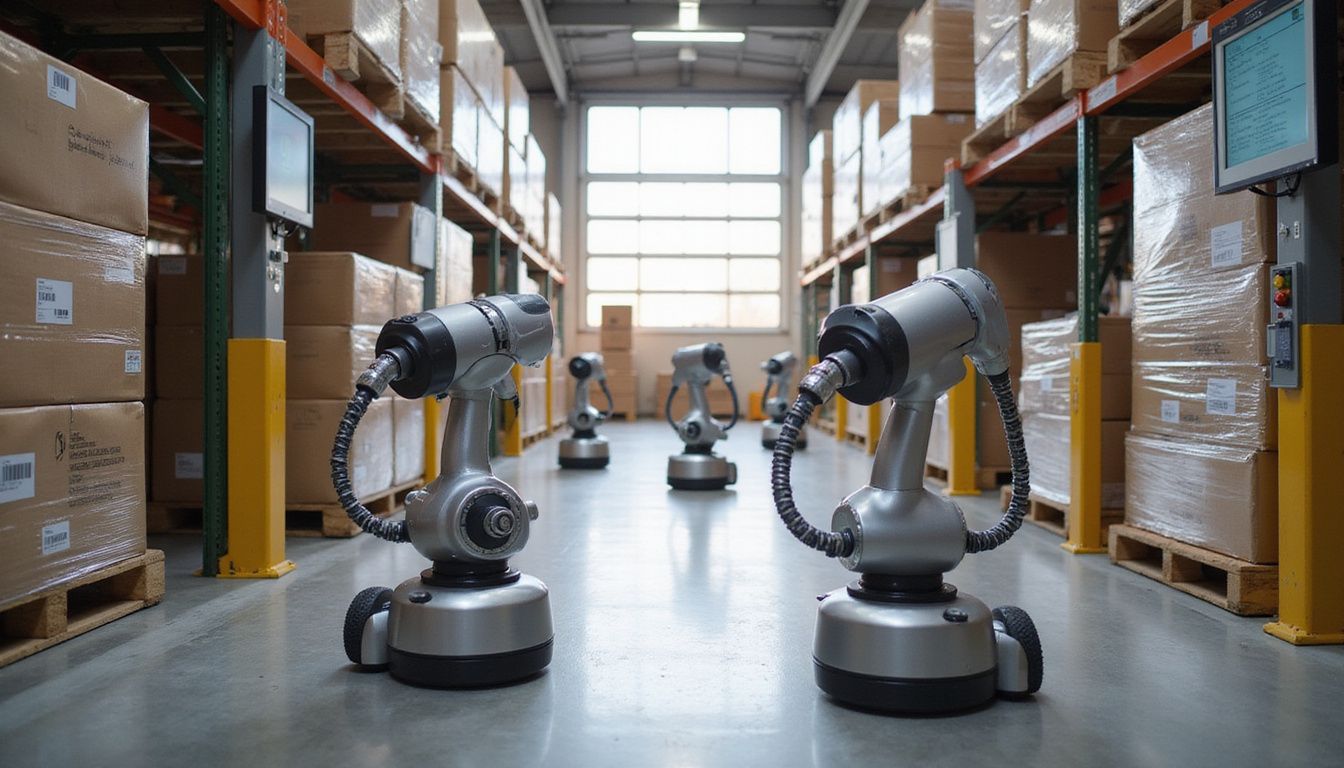
After saving costs, we also see a boost in accuracy. Using RPA in supply chain optimisation cuts human error and limits mistakes from manual work. For example, a retailer saw data entry errors drop by 90 percent after using RPA tools.
Automation speeds up how we analyse data from IoT devices and AI systems across our distribution centres. We find fewer wrong shipments and better inventory records. Robots process orders the same way every time, so details match exactly with supplier lists and invoice processing tasks.
This accuracy helps with waste reduction because we do not order too much or too little stock. Accurate demand forecasting brings smoother operations all through our supply chain network.
Better Customer Experience

With better accuracy, we see big changes in the way people use our services. RPA tools help us cut delays and errors at each step of supply chain optimisation. Our customers now enjoy faster order updates and clearer shipment tracking.
FedEx uses RPA with bluPort, Parcel Santa, and Park N Parcel to give more choices for package pick up or drop off. This technology lets us answer customer questions fast by analysing data from IoT devices across distribution centres.
As a result, customer satisfaction has gone up by 40 percent since we started using artificial intelligence (AI) in these areas. We solve problems quicker and keep customers informed at every stage.
Challenges in Implementing RPA in Supply Chain

Implementing RPA in our supply chain brings some hurdles. High costs often stand in the way. Many companies face trouble integrating RPA with their current systems. This can slow down the process and create confusion for staff.
Data security is another big concern for us. We need to protect sensitive information while using new technology like AI or IoT tools. The COVID-19 pandemic has made things worse, too.
Workforce shortages have grown, and experts predict a truck driver shortfall of 160,000 by 2030; this adds extra pressure on us to find efficient solutions quickly. Changes are needed, but risks linger as we adapt to these challenges in our operations.
Companies adopt best practices to overcome these hurdles. They apply clear change management. They perform thorough system tests. They train staff regularly and conduct security audits. Detailed case studies show improvements after applying these methods.
Next, we will explore future trends that can help guide us through this transformation in supply chain management.
Future Trends in RPA for Supply Chain Management

We see exciting trends in RPA for supply chain management. The global robotics market is set to reach £91.8 billion by 2026. This growth will boost supply chain optimisation across industries.
AI and IoT are becoming key players in this space. These technologies help us analyse data more effectively. Blockchains will also play a big role, with spending expected to hit £3,272 million globally by 2026.
Companies want more transparency in their processes, and blockchain offers that solution.
RPA can enhance operations at distribution centres too. As we embrace these advancements, we foresee improved efficiency and better customer satisfaction on the horizon.
Conclusion
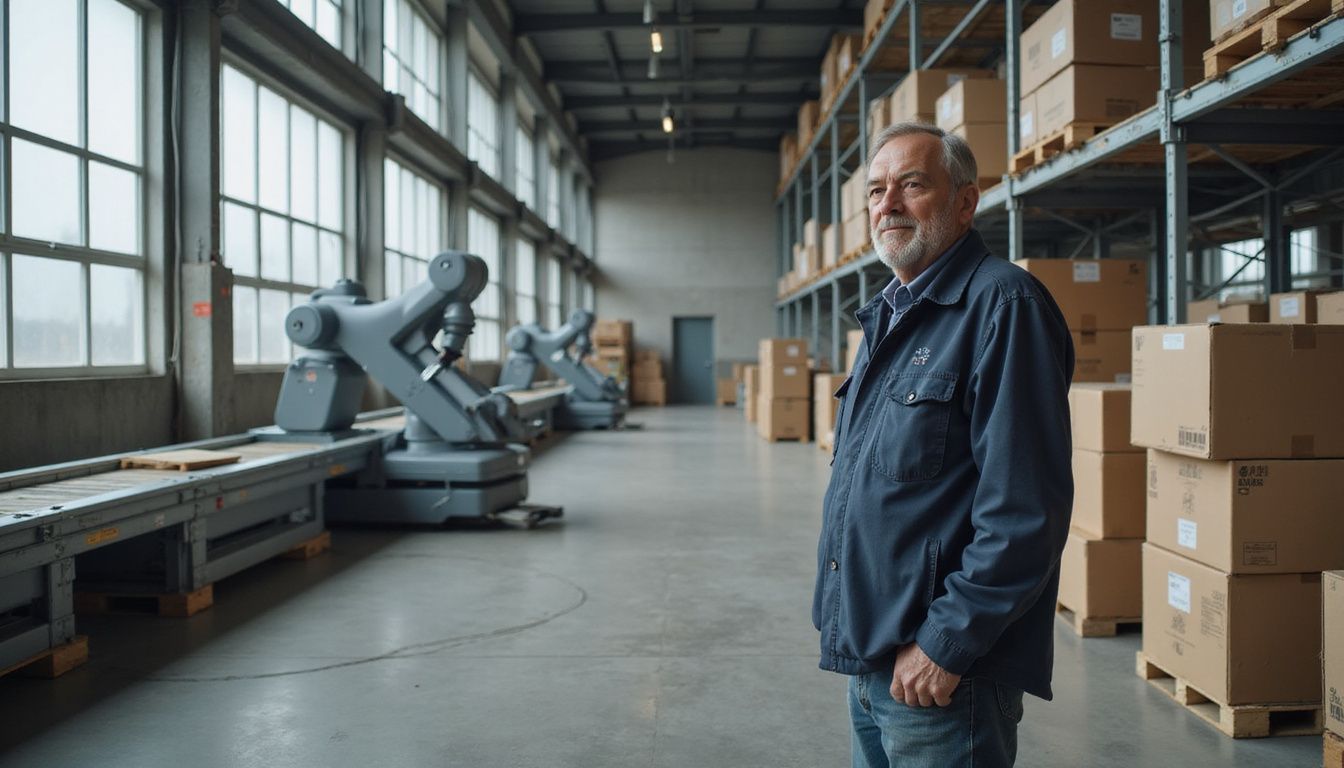
RPA is reshaping supply chain management. We discussed how it automates tasks like order processing and inventory tracking. These tools boost productivity and cut costs. Many companies see RPA as essential for success in this field.
Using RPA can help us tackle common problems, making our operations smoother and faster. As we move forward, let’s explore more about integrating AI and IoT into our systems to stay ahead of challenges.
Additional insights on robotic process automation (rpa) in supply chain optimization have shown significant improvements. Robotic process automation (rpa) streamlines tasks by automating repetitive, rule-based work. It increases efficiency, reduces errors, and improves overall supply chain visibility. It is applied from demand planning and procurement to inventory management and logistics.
Here is a more detailed look at robotic process automation (rpa)’s applications in supply chain optimization:
1. Demand Planning and Forecasting:
2. Procurement and Supplier Management:
3. Inventory Management:
4. Order Processing and Fulfilment:
5. Logistics and Shipment Management:
6. Supplier Collaboration and Communication:
7. Customer Service:
In essence, robotic process automation (rpa) transforms supply chain management by automating repetitive tasks, reducing errors, and improving overall efficiency. This allows businesses to focus on more strategic and value-added activities, ultimately leading to better business outcomes.
Disclosure: The information presented in this article is based on research, industry data, and published case studies. This content is for informational purposes only and does not constitute professional advice.



.svg)










